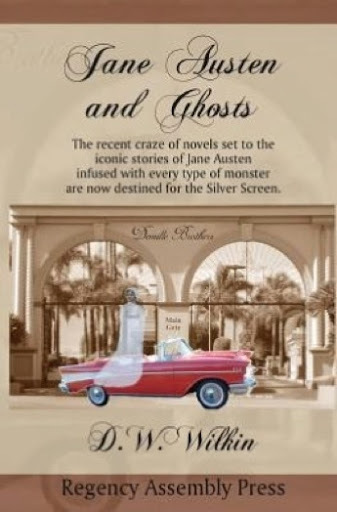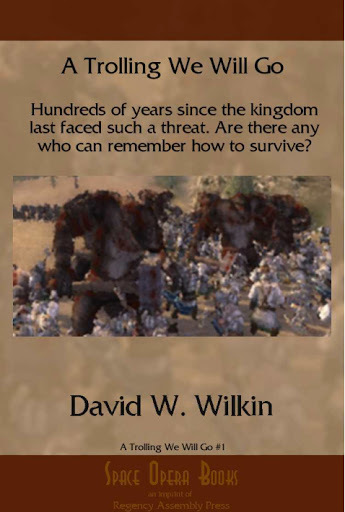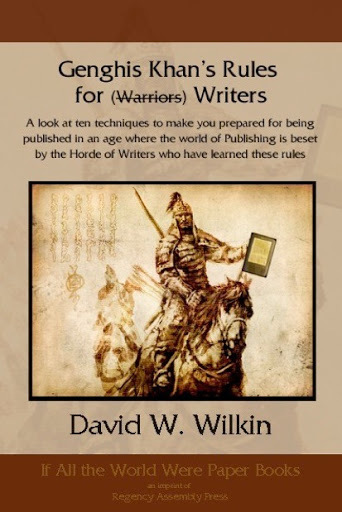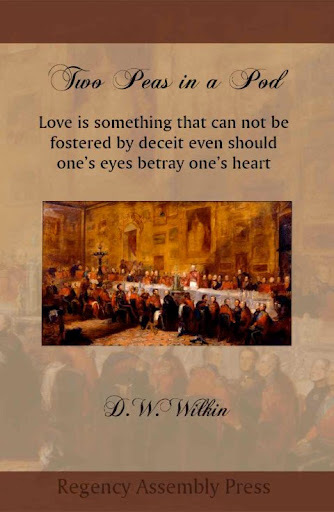D.W. Wilkin's Blog, page 43
July 3, 2016
Jane Austen Fans Rejoice, Jane is BACKKKK… Jane Austen and Ghosts
Special Sale Price!
Jane Austen and Ghosts.
Not only do I write Regency and Romance, but this can take a humorous turn. Some years back, I am sure readers of this blog will be aware that some writers began to take great liberty with Jane Austen and her works. Pride and Prejudice being liberally rewritten with the inclusion of zombies.
Then other books appeared with sea monsters, and werewolves and vampires. President Lincoln has even made it to the big screen where he is intent on sending foul creatures to hell. It occurred to me, even before I read any of this literature, that Jane would probably not appreciate what had been done to her classic piece.
That the tales and her life have become visual spectacles that we enjoy she might not like either, but is perhaps resigned to. That zombies, ghosts and vampires are now used to follow her own plot lines would I think, have her turning over in her grave. Jane Austen and Ghosts is my take on that.
It is now available in a variety of formats. For a limited time it has been reduced to $2.99 for your eReaders and $8.99 for paperback you can get this Jane Austen adventure.
Barnes and Noble for your Nook
and in Paperback
In the world of moviemaking, nothing is as golden as rebooting a classic tale that has made fortunes every time before when it has been adapted for the silver screen.
Certainly any work by Jane Austen made into a movie will not only be bankable, but also considered a work of art. That is of course until the current wave of adaptations that unite her classic stories with all the elements of the afterlife is attempted to be created.
That these have found success in the marketplace amongst booklovers may not be quite understood by those who make movies. But that they are a success is understood and a reason to make them into movies.
All that being said, perhaps it would also be fair to say that the very proper Jane, were she present to have anything to say about it, would not be pleased. Of course she has been away from this Earth for nearly 200 hundred years.
But does that mean were she upset enough, she wouldn’t come back?
Feedback
If you have any commentary, thoughts, ideas about the book (especially if you buy it, read it and like it
July 2, 2016
Regency Personalities Series-Thomas Taylour 1st Earl of Bective
Regency Personalities Series
In my attempts to provide us with the details of the Regency, today I continue with one of the many period notables.
Thomas Taylour 1st Earl of Bective
20 October 1724 – 14 February 1795
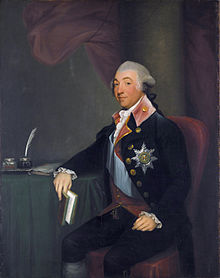
Thomas Taylour
Thomas Taylour 1st Earl of Bective was the oldest son of Sir Thomas Taylor, 2nd Baronet and his wife Sarah Graham, daughter of John Graham. In 1757, Bective succeeded his father as baronet. He was educated at Trinity College, Dublin.
Bective entered the Irish House of Commons in 1747 and sat as Member of Parliament (MP) for Kells until 1760, when he was elevated to the Peerage of Ireland as Baron Headfort, of Headfort, in the County of Meath. He was further honoured in 1762, he was made Viscount Headfort, of Headfort, in the County of Meath in 1762, and on 24 October 1766, he was finally advanced to the dignity of Earl of Bective, of Bective Castle, in the County of Meath. In 1783, Bective became a founding member of the Most Illustrious Order of St Patrick and in 1785 he was sworn of the Privy Council of Ireland.
On 4 July 1754, he married Jane Rowley, daughter of Hercules Langford Rowley and his wife Elizabeth Rowley, 1st Viscountess Langford. They had four daughters and six sons. Bective died aged 70 and was succeeded in his titles by his oldest son Thomas, who became the first Marquess of Headfort.
His second son Hercules and his third son Robert represented both the same constituency as their father. The fourth son Clotworthy was ennobled in his own right as Baron Langford. His grandson General Sir Richard Taylor enjoyed a distinguished career in the army.


Space Opera Books Presents A Trolling We Will Go (Book #1)
A Trolling We Will Go
Not only do I write Regency and Romance, but I also have delved into Fantasy.
The Trolling series, (the first three are in print) is the story of a man, Humphrey. We meet him as he has left youth and become a man with a man’s responsibilities. We follow him in a series of stories that encompass the stages of life.
We see him when he starts his family, when he has older sons and the father son dynamic is tested. We see him when his children begin to marry and have children, and at the end of his life when those he has loved, and those who were his friends proceed him over the threshold into death.
All this while he serves a kingdom troubled by monsters. Troubles that he and his friends will learn to deal with and rectify.
It is now available in a variety of formats. For $.99 you can get this fantasy adventure.
Barnes and Noble for your Nook
The Valley Kingdom of Torahn had been at peace for fifty years since the Council of Twenty-One saw fit to dispense with their royal family.
The only Kingdom without a King on the west side of the continent. But late last year, something caused the Goblins in the Old Forest, Karasbahn to stir and act courageous.
Something that men can not remember seeing Goblins ever doing. What has gotten the Goblins in such a state?
Whatever it is, it can not be good news for Torahn. Or for Humphrey, a woodcutter for a small town, far from Karasbahn.
But part of the Kingdom’s militia, with no family or other exemptions. He is perfect to be sent to the Old Forest and find out what scares the Goblins that they have become fearless.
Feedback
If you have any commentary, thoughts, ideas about the book (especially if you buy it, read it and like it
July 1, 2016
Regency Personalities Series-J.S. Fry & Sons
Regency Personalities Series
In my attempts to provide us with the details of the Regency, today I continue with one of the many period notables.
J.S. Fry & Sons
1761-1967 (Merged with Cadbury in 1919)
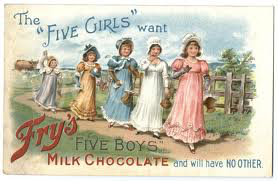
J.S. Fry & Sons
J.S. Fry & Sons, Ltd. was a British chocolate company owned by Joseph Storrs Fry and his family. The business went through several changes of name and ownership; it was named J. S. Fry & Sons in 1822. The original Somerdale Factory, then part of Cadbury’s, was closed after 2010.
Joseph Fry, a Quaker, was born in 1728. He started making chocolate around 1759. In 1761 Joseph Fry and John Vaughan purchased the chocolate business of Walter Churchman. The company was then named Fry, Vaughan & Co.. In 1777 their chocolate works moved from Newgate Street to Union Street, Bristol. Joseph Fry died in 1787 and the company was renamed Anna Fry & Son.
In 1795 Joseph Storrs Fry assumed control of the company. He patented a method of grinding cocoa beans using a Watt steam engine. As a result factory techniques were introduced into the cocoa business. In 1803 Anna Fry died and Joseph Storrs Fry partnered with a Dr. Hunt. The business was renamed Fry & Hunt. In 1822 Hunt retired and Joseph Storrs Fry took on his sons Joseph, Francis and Richard as partners: the firm was renamed J. S. Fry & Sons.
The company became the largest commercial producer of chocolate in Britain. In 1835 Joseph Storrs Fry died and his sons took full control.


Rules for better writing from Genghis Khan
The Rules for Writers
Those who follow me for a long time know that I also write in other fields aside from Regency Romance and the historical novels I do.
A little while ago, before the end of 2011 and the 2011 NaNoWriMo, (where I wrote the first draft of another Regency) I started work on a project about writing.
The premise was what one should think about when starting and working on a project. I came up with 10 rules to follow in a quest to become a writer and tackle that novel.
Here are The 10 Rules:
1) Read like a writer
2) Have a good story
3) Your work will be Thematic
4) Plot: The seven deadly ones
5) Characters will carry your tale, near and far
6) Words are your warriors
7) Stories are structured
8) All tales building to a Crescendo
9) Genghis edits history, shouldn’t you as well
10) Act like a writer
So it is now released. For $4.99 you can get this treatise on honing your skills.
Barnes and Noble for your Nook
Genghis Khan came from the Steppes of Mongolia, a family torn apart by neighboring tribes, to unite those tribes, or defeat them, and then conquer the greater part of the known world. His heirs would continue his conquest right to the edge of western society. The world feared the Mongols, and Genghis. Now, you can benefit, as a writer from the lessons he has to impart on how, with the changing world of publishing, you can perfect your work and write not only good material for this new age of book publishing. But can write great work for this new age. 10 simple lessons, and you will be on your way to conquering the bookshelves of the 21st century. This short book will have you learning all you really need to know to elevate your writing to the next level. These simple lessons will start you on the road to better writing as a member of the Horde in no time.
Feedback
If you have any commentary, thoughts, ideas about the book (especially if you buy it, read it and like it
June 30, 2016
Regency Personalities Series-Fox Maule-Ramsay 11th Earl of Dalhousie
Regency Personalities Series
In my attempts to provide us with the details of the Regency, today I continue with one of the many period notables.
Fox Maule-Ramsay 11th Earl of Dalhousie
22 April 1801 – 6 July 1874
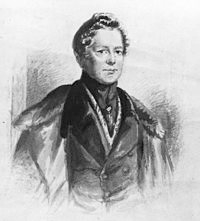
Fox Maule-Ramsay
Fox Maule-Ramsay 11th Earl of Dalhousie was the eldest son of William Maule, 1st Baron Panmure, and a grandson of George Ramsay, 8th Earl of Dalhousie. Christened Fox as a compliment to Charles James Fox, the great Whig, he served for a term in the Army.
In 1835 he entered the House of Commons as member for Perthshire. In the ministry of Lord Melbourne (1835–1841), Maule was Under-Secretary of State for the Home Department, and under Lord John Russell, he was Secretary at War from July 1846 to January 1852, when for two or three weeks he was President of the Board of Control.
In April 1852, he succeeded his father as 2nd Baron Panmure. In early 1855, he joined Lord Palmerston’s cabinet, filling the new office of Secretary of State for War. Lord Panmure held this office until February 1858. He was at the War Office during the concluding period of the Crimean War, and met a good deal of criticism. He was Keeper of the Privy Seal of Scotland from 1853 until his death.
Always interested in church matters, Dalhousie was a prominent supporter of the Free Church of Scotland after it split from the Church of Scotland in the disruption of 1843. In December 1860, he succeeded his kinsman, the 1st Marquess of Dalhousie, as 11th Earl of Dalhousie. He shortly afterwards changed his surname to “Maule-Ramsay” (his father had changed his surname to “Maule” from the family’s patronymic “Ramsay” before being created Baron Panmure).
Lord Dalhousie married the Hon. Montague, daughter of George Abercromby, 2nd Baron Abercromby, in 1831. They had no children. She died in November 1853, aged 46. Lord Dalhousie died July 1874, aged 73. On his death, the barony of Panmure became extinct, but the earldom of Dalhousie (and its subsidiary titles) passed to his cousin, George Ramsay.


An Unofficial Guide to how to win the Scenarios of Rollercoaster Tycoon 3
An Unofficial Guide to how to win the Scenarios of Rollercoaster Tycoon 3
I have been a fan of this series of computer games since early in its release of the very first game. That game was done by one programmer, Chris Sawyer, and it was the first I recall of an internet hit. Websites were put up in dedication to this game where people showed off their creations, based on real amusement parks. These sites were funded by individuals, an expense that was not necessarily as cheap then as it is now. Nor as easy to program then as it might be to build a web page now.
Prima Books released game guides for each iteration of the game, Rollercoaster Tycoon 1, Rollercoaster Tycoon 2 and Rollercoaster Tycoon 3 (RCT3) but not for the expansion sets. And unlike the first two works, the third guide was riddle with incorrect solutions. As I played the game that frustrated me. And I took to the forums that Atari, the game publisher hosted to see if I could find a way to solve those scenarios that the Prima Guide had written up in error. Not finding any good advice, I created my own for the scenarios that the “Official” Guide had gotten wrong.
Solutions that if you followed my advice you would win the scenario and move on. But if you followed the
“Official” version you would fail and not be able to complete the game. My style and format being different than the folks at Prima, I continued for all the Scenarios that they had gotten right as well, though my solutions cut to the chase and got you to the winner’s circle more quickly, more directly.
My contributions to the “Official” Forum, got me a place as a playtester for both expansions to the game, Soaked and Wild. And for each of these games, I wrote the guides during the play testing phase so all the play testers could solve the scenarios, and then once again after the official release to make changes in the formula in case our aiding to perfect the game had changed matters. For this, Atari and Frontier (the actual programmers of the game) placed me within the game itself.
And for the longest time, these have been free at the “Official” Forums, as well as my own website dedicated to the game. But a short time ago, I noticed that Atari, after one of its bankruptcies had deleted their forums. So now I am releasing the Guide for one and all. I have added new material and it is near 100 pages, just for the first of the three games. It is available for the Kindle at present for $2.99.
(Click on the picture to purchase)
Not only are all 18 Scenarios covered, but there are sections covering every Cheat Code, Custom Scenery, the famous Small Park Competition, the Advanced Fireworks Editor, the Flying Camera Route Editor which are all the techniques every amusement park designer needs to make a fantastic park in Rollercoaster Tycoon 3.
Scenarios for RCT 3
1) Vanilla Hills
2) Goldrush
3) Checkered Flag
4) Box Office
5) Fright Night
6) Go With The Flow
7) Broom Lake
8) Valley of Kings
9) Gunslinger
10) Ghost Town
11) National Treasure
12) New Blood
13) Island Hopping
14) Cosmic Crags
15) La La Land
16) Mountain Rescue
17) The Money Pit
18) Paradise Island


June 29, 2016
Regency Personalities Series-Lucy Anderson
Regency Personalities Series
In my attempts to provide us with the details of the Regency, today I continue with one of the many period notables.
Lucy Anderson
12 December 1797 – 24 December 1878
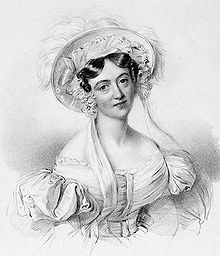
Lucy Anderson
Lucy Anderson was the most eminent of the English pianists of the early Victorian era. She is mentioned in the same breath as English pianists of the calibre of William Sterndale Bennett.
She was born Lucy Philpot in Bath, Somerset in 1797, the daughter of John Philpot, a music seller, who is also described as “a professor of music” or “an obscure double bass player”. Grove has it that her sister Fanny, a piano teacher, married into the Loder family, which was prominent in Bath’s musical community. However, genealogical research suggests that this was in fact Frances Elizabeth Mary Kirkham, step-daughter of Lucy’s sister, Jane Harriet Philpot who became the wife of flautist George Loder, the brother of violinist John David Loder. Lucy had lessons from her cousin, a Mr. Windsor of Bath, and from William Crotch. She first achieved recognition as a pianist in Bath, moving to London in 1818. In July 1820 she married a well-known violinist, George Frederick Anderson.
Lucy Anderson was the first woman pianist to play at the Philharmonic Society concerts. She appeared 19 times between 1822 and 1862, and was the first pianist to play Beethoven’s “Emperor” Concerto with the society. She championed Beethoven’s concertos and played them more often than any other English pianist up to 1850. In 1843, she was piano soloist in Beethoven’s Choral Fantasy, conducted by Ignaz Moscheles. In 1869 she became an honorary member of the Royal Philharmonic Society, a rarely awarded honour.
In 1830, Johann Nepomuk Hummel composed a “Grand Military Septet” in C major, Op. 114, for violin, cello, double bass, flute, clarinet, trumpet and piano. One source says this was dedicated to Lucy Anderson, although another says it was dedicated to Madame Adolphe de Lanneau.
In 1837 the publisher Alfred Novello gave Lucy Anderson exclusive rights for six months to play Felix Mendelssohn’s Piano Concerto No. 2 in England. This was a condition of an interest-free loan of £30 from her husband, the money being needed by Novello to publish the concerto.
She is described as “formidable” and “a manipulator of wide patronage”. Two queens appointed her as their pianist, Queen Adelaide in 1832 and Queen Victoria in 1837, Anderson having been Victoria’s piano teacher from 1834 or earlier. She taught the piano to Victoria’s children, as well as to other high-born ladies. She was a teacher of Arabella Goddard.
In 1848 her husband George Frederick Anderson was appointed Master of the Queen’s Music. Lucy Anderson retired in 1862, and died in London on 24 December 1878.
Her portrait by Richard James Lane is in the National Portrait Gallery.


Two Peas in A Pod, A Regency Romance
Two Peas in a Pod has now passed the exclusivity to Amazon test and is available in wider release, electronically (digitally) for other readers now. We sold a few copies on Amazon but nothing to warrant an exclusivity period. Amazon is too big and too full of itself.
Two Peas in a Pod is still available as a Trade paperback click here to order Regency Assembly Press.
$3.99 for an electronic copy. The Trade Paperback, due to publishing costs and the cut that Amazon takes continue to see a Trade Paperback costing $15.99 (The much hyped royalties that we writers are supposed to get is nowhere near what the news reports say. Most of that price is taken by Amazon.)
iBookstore (These are my books
and still at Amazon
Here is a picture, which of course you can click on to go fetch the book:
Love is something that can not be fostered by deceit even should one’s eyes betray one’s heart.
Two brothers that are so close in appearance that only a handful have ever been able to tell them apart. The Earl of Kent, Percival Francis Michael Coldwell is only older than his brother, Peregrine Maxim Frederick Coldwell by 17 minutes. They may have looked as each other, but that masked how they were truthfully quite opposite to one another.
For Percy, his personality was one that he was quite comfortable with and more than happy to let Perry be of a serious nature. At least until he met Veronica Hamilton, the daughter of Baron Hamilton of Leith. She was only interested in a man who was serious.
Once more, Peregrine is obliged to help his older brother by taking his place, that the Earl may woo the young lady who has captured his heart. That is, until there is one who captures Peregrine’s heart as well.
There is a visual guide to Two Peas in a Pod 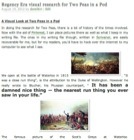 as well at Pinterest and a blog post here.
as well at Pinterest and a blog post here.


June 28, 2016
Regency Personalities Series-William Clarkson Stanfield-Clarkson Frederick Stanfield
Regency Personalities Series
In my attempts to provide us with the details of the Regency, today I continue with one of the many period notables.
William Clarkson Stanfield-Clarkson Frederick Stanfield
3 December 1793 – 18 May 1867
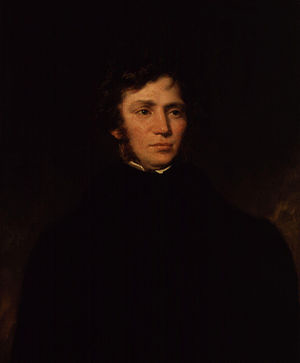
William Clarkson Stanfield-Clarkson Frederick Stanfield
William Clarkson Stanfield-Clarkson Frederick Stanfield was born at Sunderland, the son of James Field Stanfield (1749–1824) an Irish-born author, actor and former seaman. Clarkson was named after Thomas Clarkson, the slave trade abolitionist, whom his father knew, and this was the only forename he used, although there is reason to believe Frederick was a second one.
Stanfield probably inherited artistic talent from his mother, who is said to have been an artist but died in 1801. He was briefly apprenticed to a coach decorator in 1806, but left owing to the drunkenness of his master’s wife and joined a South Shields collier to become a sailor. In 1808 he was pressed into the Royal Navy, serving in the guardship HMS Namur at Sheerness. Discharged on health grounds in 1814, he then made a voyage to China in 1815 on the East Indiaman Warley and returned with many sketches.
In August 1816 Stanfield was engaged as a decorator and scene-painter at the Royalty Theatre in Wellclose Square, London. Along with David Roberts he was afterwards employed at the Coburg theatre, Lambeth, and in 1823 he became a resident scene-painter at the Drury Lane theatre, where he rose rapidly to fame through the huge quantity of spectacular scenery which he produced for that house until 1834.
Stanfield abandoned scenery painting after Christmas 1834 — though he made exceptions for two personal friends. He designed scenery for the stage productions of William Charles Macready, and for the amateur theatricals of Charles Dickens.
Stanfield partnered with David Roberts in several large-scale diorama and panorama projects in the 1820s and 1830s. The newest development in these popular entertainments was the “moving diorama” or “moving panorama.” These consisted of huge paintings that unfolded upon rollers like giant scrolls; they were supplemented with sound and lighting effects to create a nineteenth-century anticipation of cinema. Stanfield and Roberts produced eight of these entertainments; in light of their later accomplishments as marine painters, their panoramas of two important naval engagements, the Bombardment of Algiers and The Battle of Navarino, are worth noting.
An 1830 tour through Germany and Italy furnished Stanfield with material for two more moving panoramas, The Military Pass of the Simplon (1830) and Venice and Its Adjacent Islands (1831). Stanfield executed the first in only eleven days; it earned him a fee of £300. The Venetian panorama of the next year was 300 feet long and 20 high; gas lit, it unrolled through 15 or 20 minutes. The show included stage props and even singing gondoliers. After the show closed, portions of the work were re-used in productions of Shakespeare’s The Merchant of Venice and Otway’s Venice Preserved.
The moving panoramas of Stanfield and other artists became highlights of the traditional Christmas pantomimes.
Meanwhile, Stanfield developed his skills as an easel painter, especially of marine subjects; he first exhibited at the Royal Academy in 1820 and continued, with only a few early interruptions, to his death. He was also a founder member of the Society of British Artists (from 1824) and its president for 1829, and exhibited there and at the British Institution, where in 1828 his picture Wreckers off Fort Rouge gained a premium of 50 guineas. He was elected Associate Member of the Royal Academy in 1832, and became a full Academician in February 1835. His elevation was in part a result of the interest of William IV who, having admired his St. Michael’s Mount at the Academy in 1831 (now in the National Gallery of Victoria, Australia), commissioned two works from him of the Opening of New London Bridge (1832) and The Entrance to Portsmouth Harbour. Both remain in the Royal Collection.
Until his death he contributed a long series of powerful and highly popular works to the Academy, both of marine subjects and landscapes from his travels at home and in France, the Netherlands, Germany, Italy, Spain, and Ireland. Notable works include:
The Battle of Trafalgar (1836), executed for the United Service Club
the Castle of Ischia (1841), now in Sunderland Museum and Art Gallery
Isola Bella (1841), among the results of a visit to Italy in 1839
French troops Fording the Magra (1847)
HMS The Victory Bearing the Body of Nelson Towed into Gibraltar after the Battle of Trafalgar (1853), painted for Sir Samuel Morton Peto at Somerleyton Hall, Suffolk (which is today open to the public)
The Abandoned (1856; untraced since 1930)
He also executed two notable series of Venetian subjects, one for the former dining room at Bowood House, Wiltshire, for the 3rd Marquess of Lansdowne, the other for the Duchess of Sutherland at Trentham Park, Staffordshire. Neither house survives but some of Stanfield’s work for Bowood can still be seen there (the present Bowood House and park, open to the public, is a conversion of the old stable block). He illustrated Heath’s Picturesque Annuals for the years 1832–34, and in 1838 published a collection of lithographic views on the Rhine, Moselle and Meuse; forty subjects from both sides of the English Channel were also steel-engraved under the title of Stanfield’s Coast Scenery (1836). Among literary works for which he provided illustrations were Captain Marryat’s The Pirate and the Three Cutters (1836), Poor Jack (1840) and the lives and works of Lord Byron, George Crabbe, and Samuel Johnson, mainly in editions by John Murray.
Stanfield’s art was powerfully influenced by his early practice as a scene-painter. But, though there is always a touch of the spectacular and the scenic in his works, and though their colour is apt to be rather dry and hard, they are large and effective in handling, powerful in their treatment of broad atmospheric effects and telling in composition, and they evince the most complete knowledge of the artistic materials with which their painter deals. John Ruskin considered his treatment of the sea and clouds of a very high order and called him the “leader of our English Realists.” Wishing him to be sometimes “less wonderful and more terrible,” Ruskin also pointed out the superior merits of his sketched work, especially in watercolour, to the often contrived picturesque qualities of many of his exhibited oils and the watercolours on which published engravings were based.
Stanfield was admired not only for his art but his personal simplicity and a modesty. He was born a Catholic and became increasingly devout in middle life, after the loss in 1838 of his eldest son by his second marriage (to Rebecca Adcock) and then, in the 1850s, both the children of his first marriage (to Mary Hutchinson, who had died in childbirth).
His eldest surviving son, George Clarkson Stanfield (1828–78) was also a painter of similar subjects, largely trained by his father. His grandson by his daughter Harriet, Joseph Richard Bagshawe was also a marine painter.
Stanfield died at Hampstead, London, and was buried in Kensal Green Catholic Cemetery.



